Days Gone review
Days Gone has been a long time coming. Deveopler Bend Studios are behind some decent games, but this is by far its biggest title to date, and Sony’s pumped their full support behind it to make it a fully fledged first party game. Ever since I played it a slice of it at a preview event, I’ve been keen to get my hands on the post apocalyptic zombie adventure. What I didn’t expect, mind you, were the amount of bugs, annoyances with some of the game’s structure, and the story’s arduous progression, especially towards the end.
You follow Deacon St. John; a member of MC Mongrels biker gang. On the day the outbreak swept across Oregon, your wife got attacked, and when an opportunity arose to get her help, Deacon sacrificed himself to send her away on a chopper to receive medical attention. Unfortunately, the chopper goes down and she’s assumed dead. Fast forward a few years and the world is a very different place. You’re left surviving amongst zombie-like creatures called freakers, inhabiting a world in utter disarray, where both the living and the infected are an equal threat.
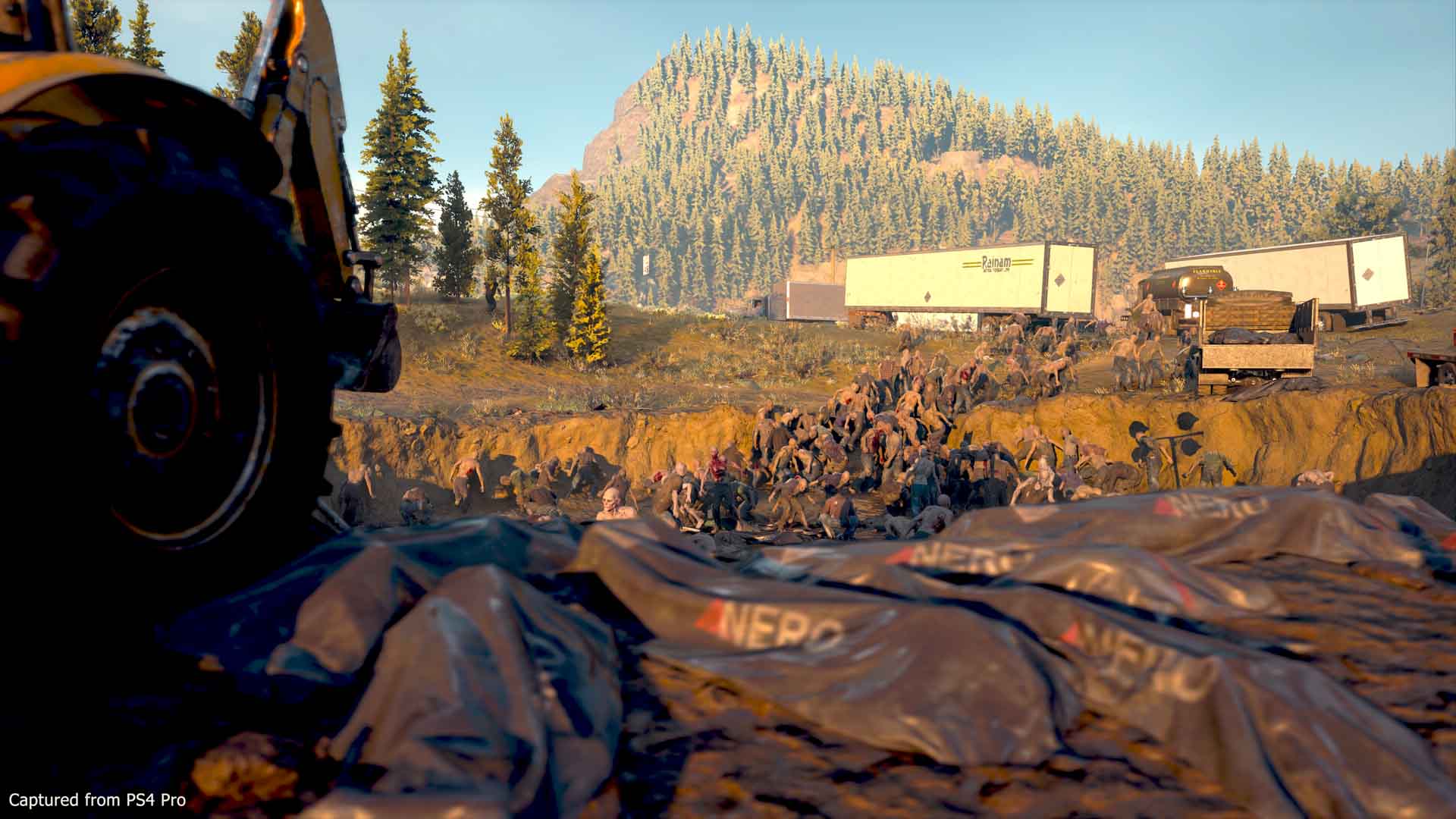
From the get go, you’re tasked with the fundamental goal of surviving. Whilst food and water isn’t a concern of yours, weapons, ammo, and your motorbike are the things you must scavenge for. The survival elements of Days Gone aren’t as tiresome as say, Metal Gear Survive or The Long Dark, but there’re many times where the notion of making each shot count is a must. At times, you can be facing a lot of freakers, and the best cause of action is to run and save your bullets. It constantly serves up a challenge in its moment to moment sections where random encounters are its most tense feature.
Equipping weapons whilst you’re out there fighting is incredibly efficient, and the way the inventory wheel works is a blessing. You could be entering a barn or a convenience store and bump into a single freaker, or taking out a full camp of marauders, and the speed at which you try to heal yourself or equip a Molotov is great. Time slows down when the wheel is open, keeping you safe as long as you don’t take too long. Crafting leads to the availability of pipe bombs, medikits, and more, and parts are scattered everywhere from abandoned houses to the boots of wrecked cars or fire engines. There’re plenty of items scattered around so you’re never left completely bare, but taking the time to find these parts is vital.
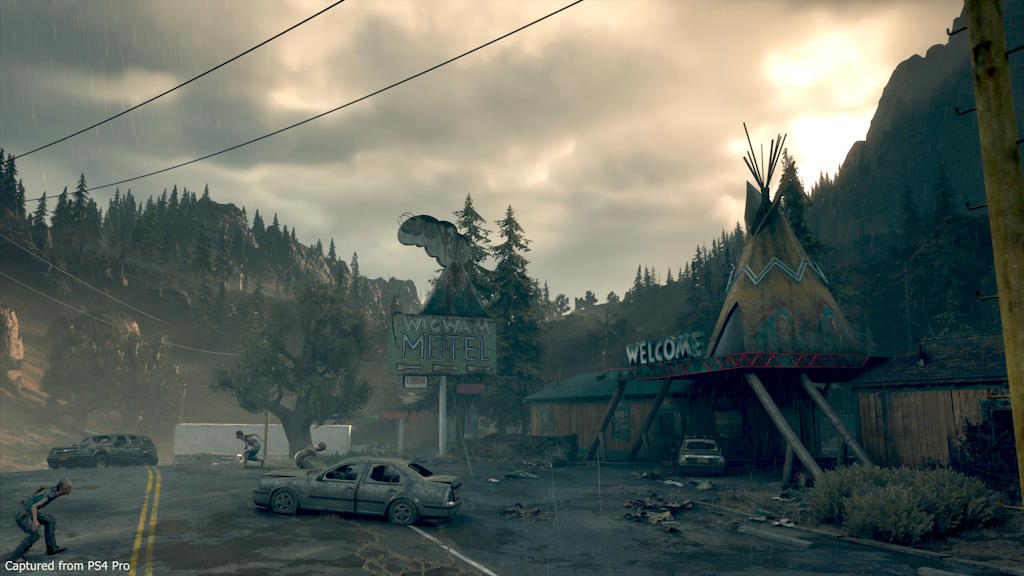
Combat is pretty straightforward. Gun control is satisfying, and the various types provide support in a number of ways. There isn’t a huge range of weapons, but you never really need a a lot. I spent almost all my time with the shotgun, a sniper rifle, and a sawn-off shotgun to take on most of the enemies. Stealth often plays a big part, and at times it’s almost too easy taking out a camp. Soldiers often move in patterns, and there’s plenty of shrubbery to hide in so I never struggled with those parts of the game.
Perhaps my favourite part of Days Gone are the hordes. They tend to be out in full force during the night, and when you encounter one for the first time it’s utterly terrifying. Your best strategy is to escape, but the more you play and the better equipment you unlock, there will be times when you can take one out if you’re feeling brave. You can also manipulate them to aid you against settlements of marauders as I did. One of my missions had me trying to wipe out a camp. On the way I encountered a horde, so instead of riding as fast as I could away from them, I teased them into following me, and as I approached the camp I lead the horde into it, letting them rip apart the thugs I was supposed to kill. Watching them scream from afar as the freakers killed them was oddly satisfying, and an example of how Days Gone does have some truly exciting moments.
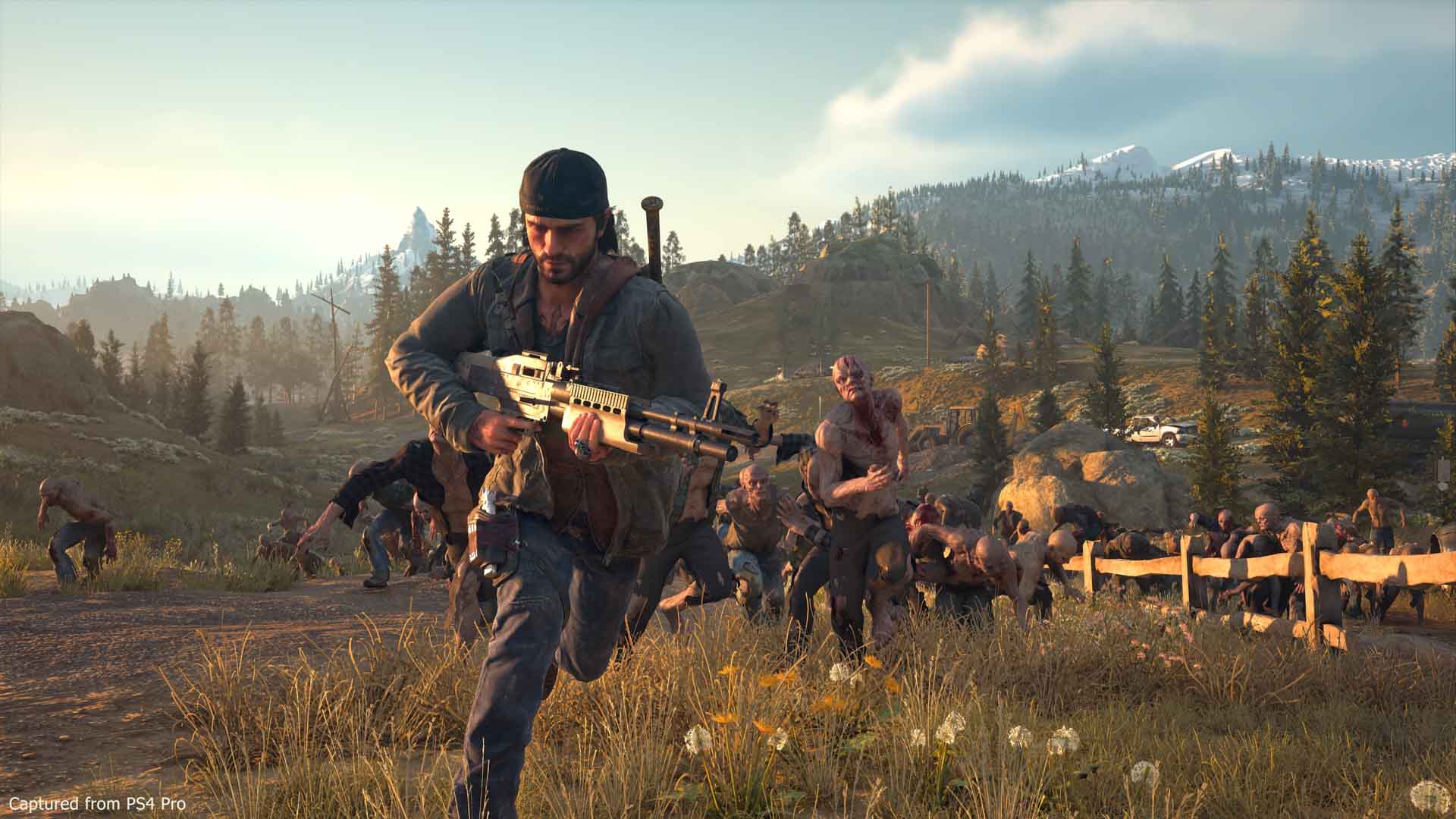
Trying to keep the bike roadworthy can sometimes be a pain, especially if you’re travelling over a long distance. Fuel isn’t that hard to come by, but planning each journey tends to be something you’ll focus more on once you’ve got to grips with how the bike works. Scavenging for scrap is a constant part of the game, as your bike needs to be fixed with it. Land funny after riding off a steep hill, crashing into a freaker, getting picked off by a sniper whilst riding and he hits your engine, or riding through water are all examples of how your bike can get damaged, so you’ll often find your bike will need repairing. Once you unlock the various camps, mechanics can refuel and fix your bike, but there’s not always a camp nearby.
One of the first big issues I encountered was the constant struggling the game seems to have when you’re on your bike and you’re travelling across the map. Persistent lagging, even freezing for periods of three seconds or more happen far too much, and when you reach a camp towards the end, it became almost unplayable at certain points. That then translated to when I was walking around, framerate issues kept appearing, and I couldn’t run without it happening. It occurred earlier on too, but not to the same extent as in the latter stages. It’s worth noting that these issues are eliminated when using a PS4 Pro, but on a standard PS4 this game does have issues.
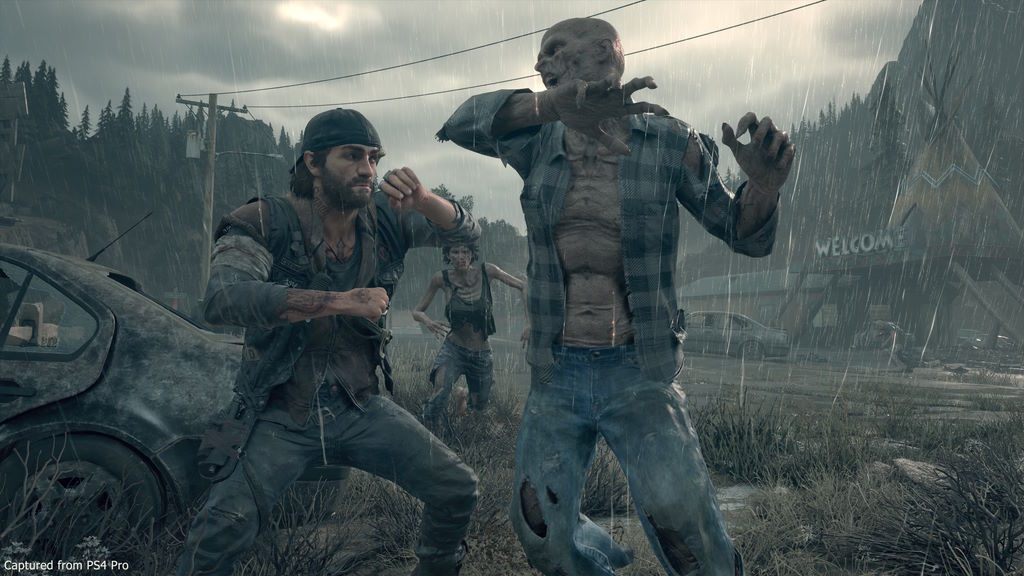
As the story unfolds, you’ll unlock new camps, and it’s at these where you can upgrade your bike’s acceleration, add a nitro boost, improve durability, and more. It’s important to keep your bike in tip top shape because some of the later missions involve chasing down other dudes on bikes, and they’ll shoot at you, gain distance between you, and always find ways to outsmart you, so bike maintenance is key. Each camp also provides a merchant where you can restock ammo, as well as buy new guns, explosives, and mods like suppressors. Most of the stock won’t become available until you’ve gained the trust of the camp by completing various missions for them.
There’re other benefits to the camp, like the ability to hand in freaker ears for more credits, as well as food you’ve hunted from the various wildlife still alive out there. There are missions where random survivors need a hand in certain situations, and once saved you can choose which camp to send them to, offering different rewards depending where you send them. With the way the story progresses, I was left feeling like I should be ignorant of the first few camps because the bulk of the second act took place in a third camp, and it felt more beneficial to just work on that one.
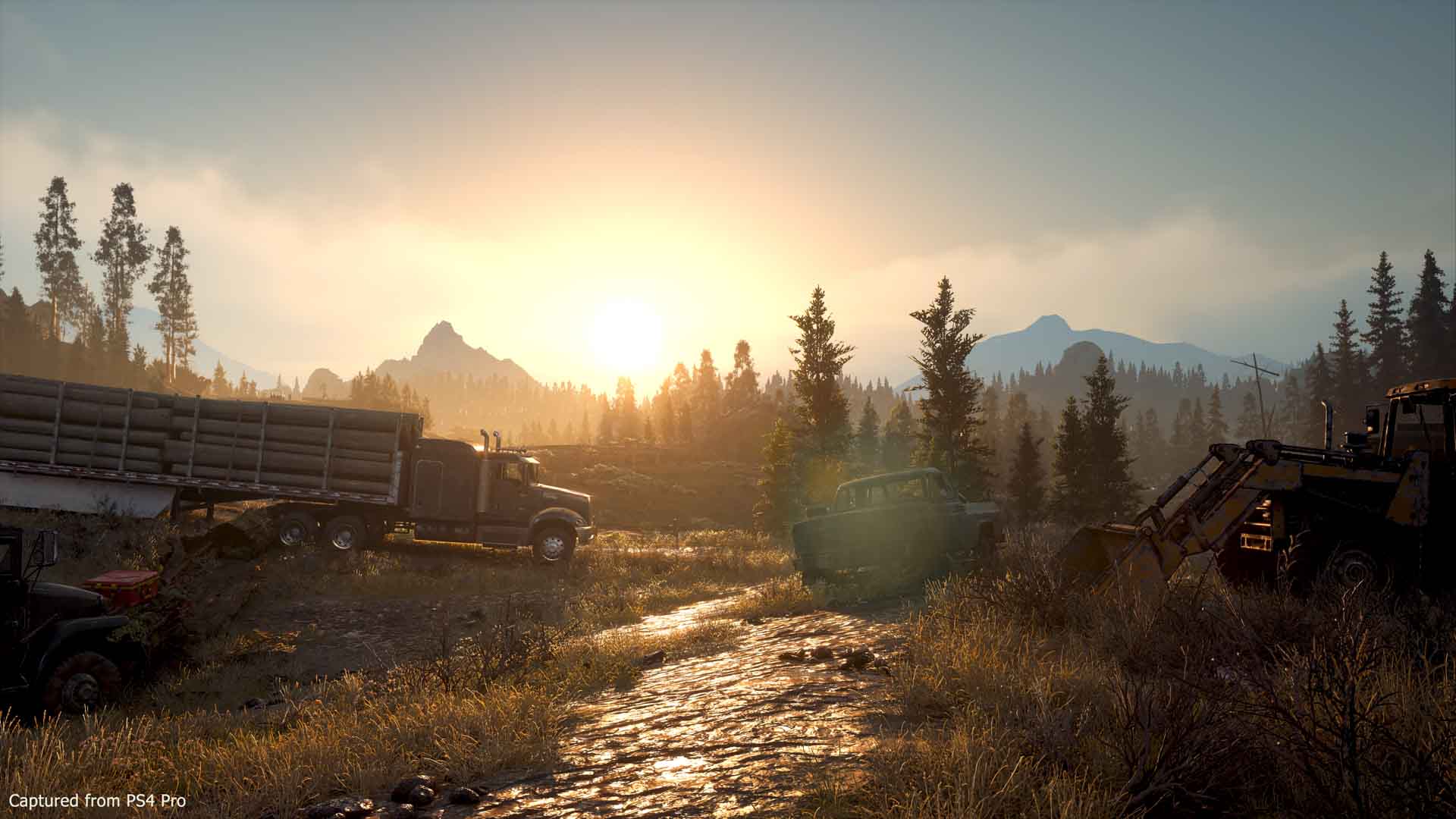
Fast travelling is available, but sometimes you’ll have to take out infestations in certain areas because the game won’t allow you to travel through. It also costs fuel to fast travel, so even if you’ve cleared areas out, a lack of fuel won’t let you. There are story-missions in the game where fuel isn’t a factor in it, and this makes the game break its own rules. If fast travel could just happen without fuel being a factor I would’ve used it a lot more. This became a pain with certain missions because at times you’re constantly going from one end of the map to the other, and it can take a lot of time, especially if you’ve not got the right tools to clear out these infestations.
Enemy types aren’t particularly varied either. Swarmers make up the bulk of the enemies, and they’re essentially the standard freakers. Newts are children that have been infected and they tend to gather around buildings. Taking these out feel different, and they won’t attack you unless you get too close. You’re introduced to an enemy called a Breaker (a bulky tank-like freaker), but from the first encounter to the next, it’s at least seven or eight hours. It isn’t the be all and end all, but seeing more of the Breakers would’ve been more of a challenge. When they do come back, you’ll see plenty of them, but it takes a substantial amount of time to face them again, and they’re a lot easier to kill the second time around.
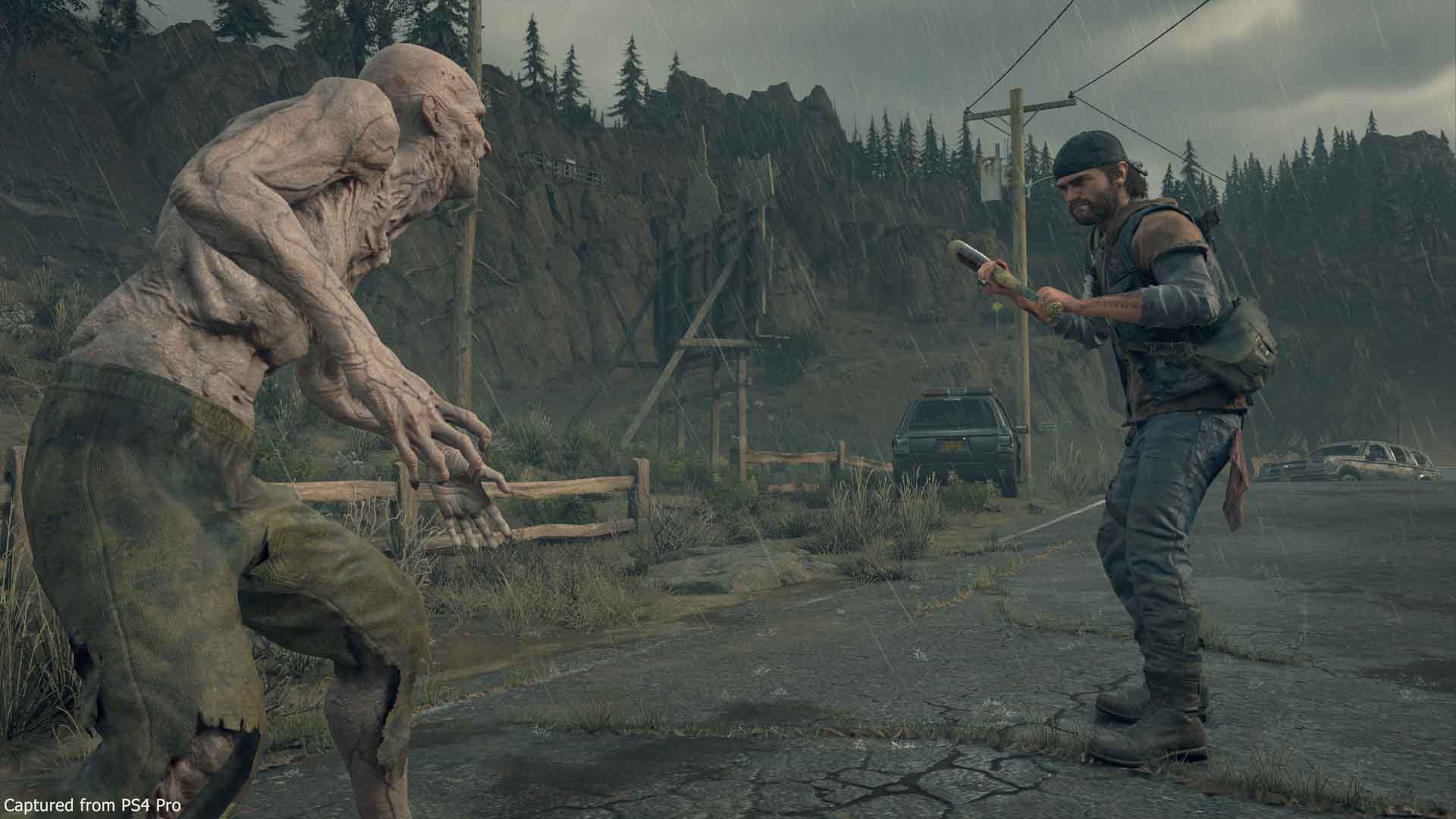
Throughout the game, you’ll earn XP for completing a wide range of missions, and by doing so you’ll get skill points to use on three distinct skill sets: Melee, Ranged, and Survival. Some will help the amount of damage you do with weaponry, improve your focused shot (think Dead Eye in Red Dead Redemption 2), and plenty more improvements to the game. Each set is tiered, and the more you unlock the better the skills are in the next tier. Jumping between your skills, the map, your inventory, and story progression can be opened with a quick swipe on the Touch Pad. It’s a nice little feature that adds more efficiency to the game, especially as you’ll spend a fair amount of time in each menu.
When it comes to the story of Deacon St. John, there were times I was engrossed in everything that was happening. The love he still holds for his wife and the desperate hope he clings to, his powerful friendship with other Mongrels member Boozer, and the constant conflict he finds himself in as he struggles to uphold his beliefs. For the most part, it flows rather well, but there are times when you’re left annoyed with how certain aspects of the story unfold. At one point, after I’d spend a lot of time watching a story arc unfold, believing I was reaching the end of the game, another section opened up and it felt like I was nowhere near seeing how Deacon’s journey ended. At that point I felt like the story was reaching a natural conclusion, but there was a lot more to play and it began to drag.
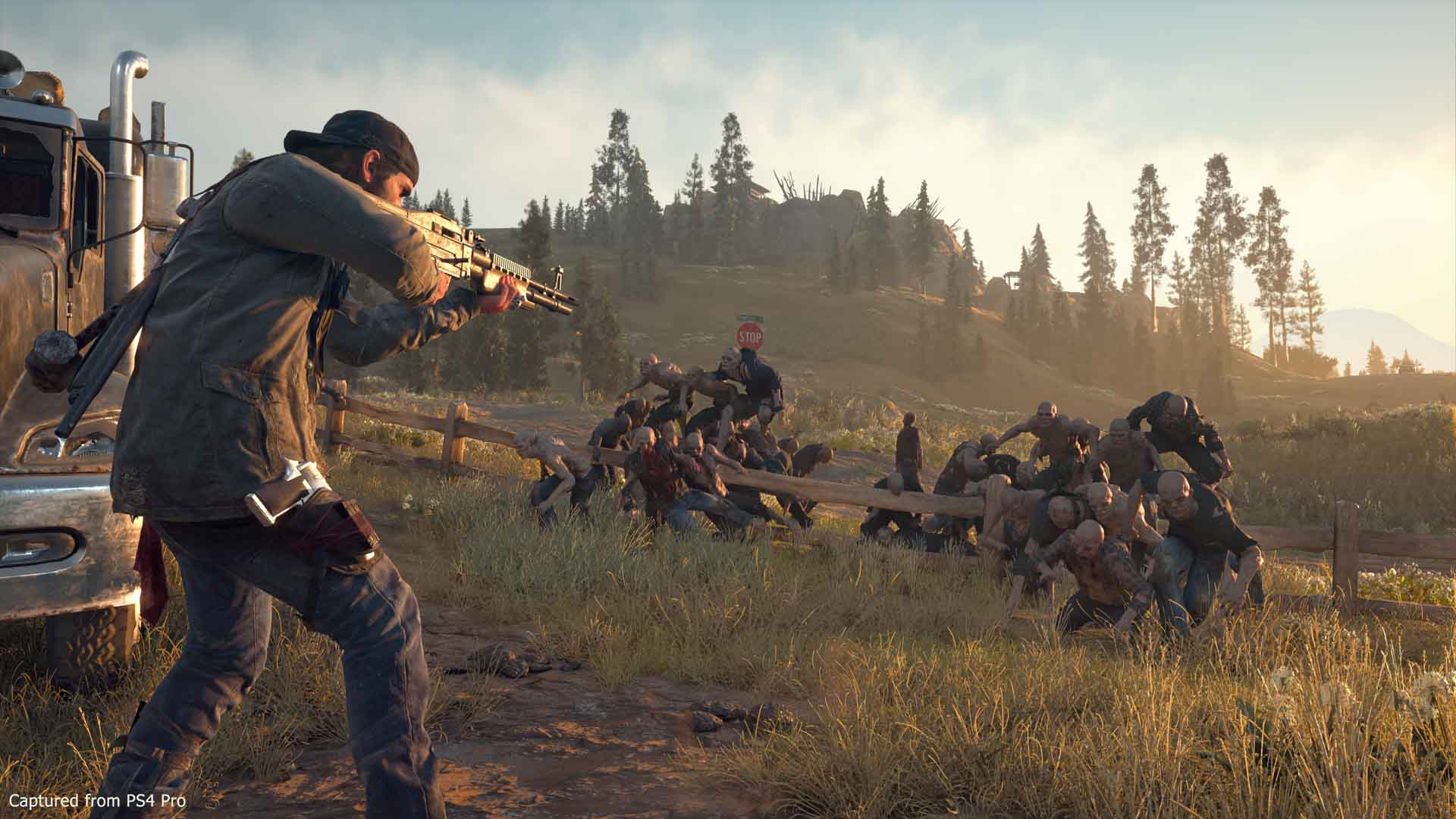
You’ll also play through flashbacks to a time before the outbreak, and as poignant as the cutscenes are, the gameplay involved is completely unnecessary. Long walks without any running and pointless objectives make them feel like they should solely be told via these cutscenes, something I would’ve been much happier watching. The voice acting is superb, and I really cared for Deacon. Boozer is also spectacular, and as their friendship evolves I was left in awe of how Bend Studios managed to convey the powerful nature of specific scenes through excellent animations and direction.
Whilst there are many plus points when it comes to the story, I encountered a wealth of bugs and glitches beyond the lagging when on the bike. I had rabid wolves freeze whilst still growling which lead to easy kills, and enemies freeze after I’d stealth killed them, only for them to remain on their feet. I had a load screen get stuck, causing me to quit the game then load back in, only for the cutscene that followed the load screen to be half way through, making me miss a substantial segment of it. I also had a cutscene take place in slow motion with no sound at all.
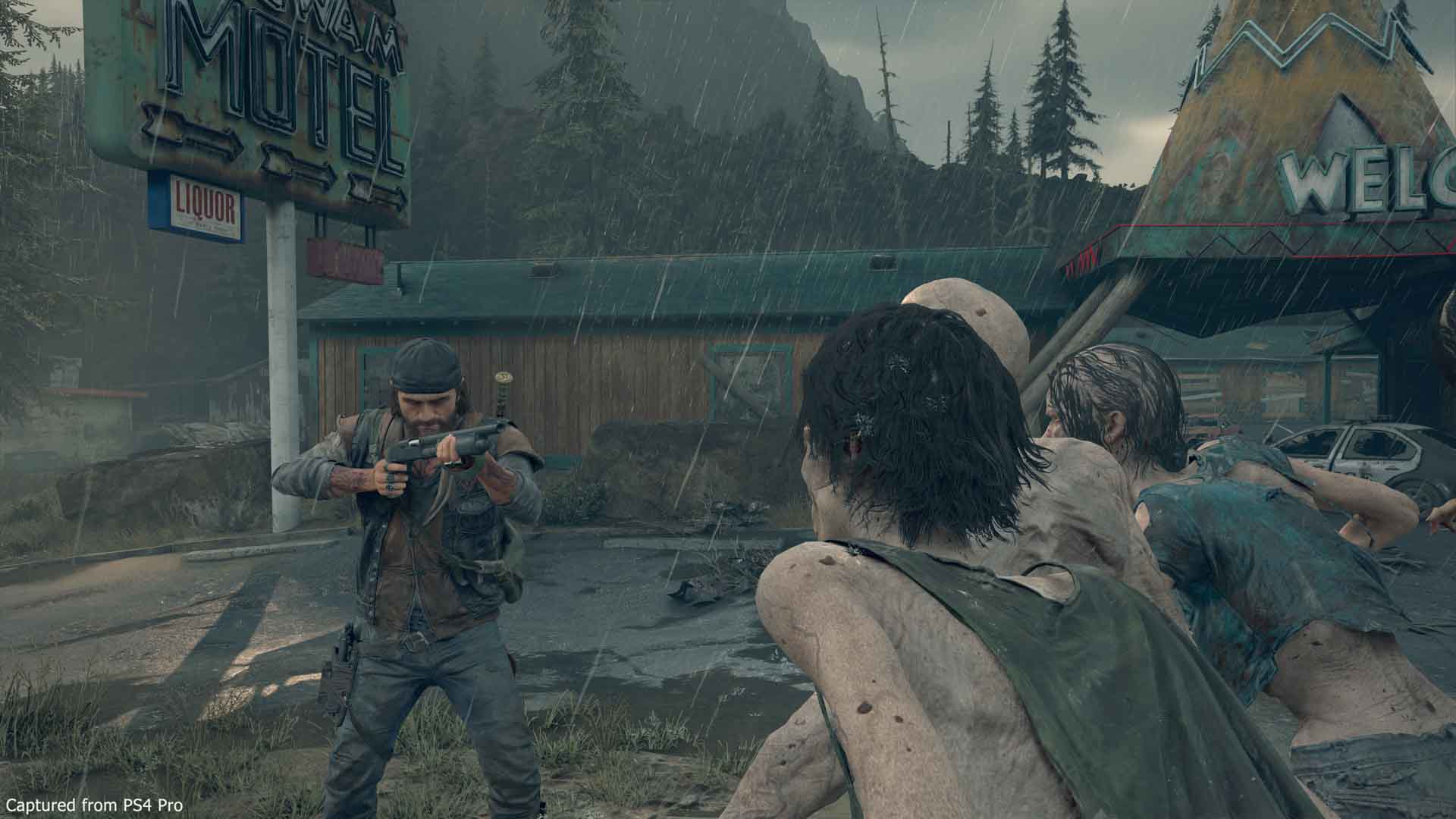
Sometimes the mission structuring is poorly balanced. There were other points where you leave a camp only for a minute later the same camp radio you with a mission, meaning you have to ride back. Sometimes you’ll have no missions at all, and the radio goes off when you’re even further away from the camp. This happened multiple times and became one of my biggest frustrations. The audio is also poorly mixed. Sometimes Deacon would shout when he doesn’t need to, or when talking to a survivor they seem to almost whisper their response. As mentioned, the voice acting is great, but Deacon unnecessarily shouts and it’s very odd indeed.
Days Gone is fantastic at times, but there’re so many bugs that I wasn’t sure if the game was stable enough to continue. Being a Sony first party game, I expected so much more, especially as we’ve been blessed with games like God of War, Horizon Zero Dawn, and Marvel’s Spider-Man in recent years. The hordes are excellent, and portions of the story are great, but pacing towards the end, a wealth of issues in the gameplay and its technical side make the journey through a destroyed Oregon a real burden at times that I came away more disappointed than impressed.




